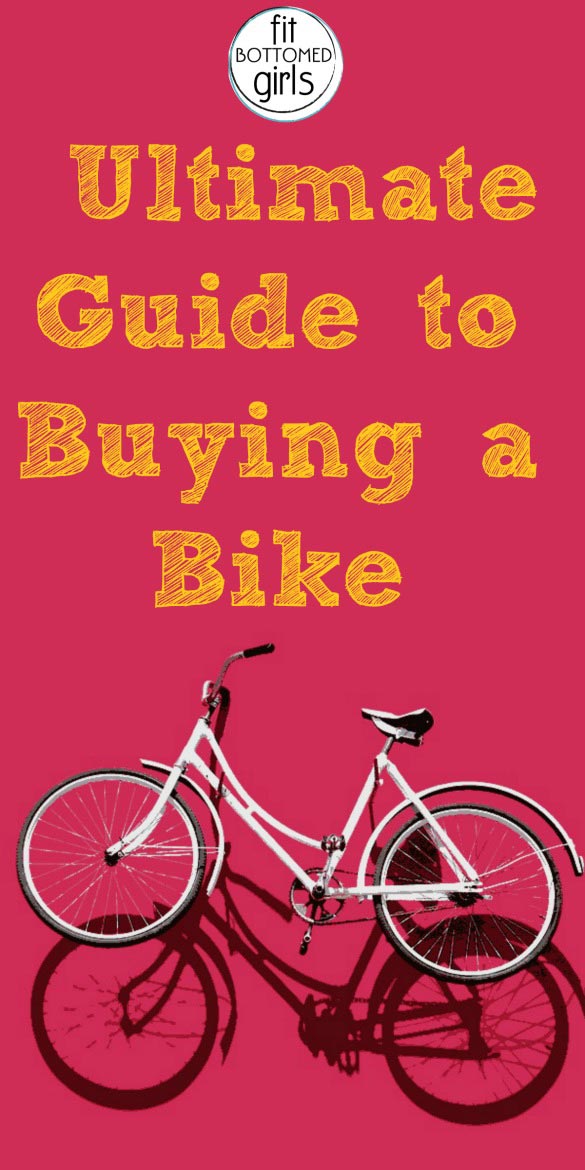The Ultimate Guide to Buying a Bike
A sign outside my local bike shop says it best: You can’t buy happiness, but you can buy a bike (and that’s basically the same thing).
But what kind of bike should you get? After all, some bikes might make you more happy than others. Choosing the right bike from the many two-wheeled options available depends on your needs, your fitness level and your interests. So we decided to put together this ultimate guide to buying a bike!
Your Guide to Buying a Bike That You’ll Love
Before you make a purchase, consider these questions:
- What kind of riding do I want to do? Will you be making occasional and brief trips (say, quick rolls to the grocery store down the street or to happy hour with your BFFs), or do you plan to log major miles every day in preparation for a cycling race or charity event?
- Where will I be riding? Consider your terrain — will you stick to paved bike paths, take to the rocky trails or climb mountains?
- What is my ultimate goal for riding a bike? Are you hoping to tackle your first triathlon or join your gym’s mountain bike club in the near future? A bike is a significant purchase, so you’ll want to make sure you choose one that fits into your goals now and tomorrow.
Once you have an solid idea of your two-wheeled aspirations, head to your local bike shop. With your answers to the questions above, along with information about your height, prior experience on a bike and concerns you may have about comfort, your bike retailer should be able to suggest different options for you to take for a test ride. And there are lots of options for buying a bike … here are the basic types of bikes!
Cruiser
Cruisers are the easy, breezy, haven’t-a-care-in-the-world bike. It’s hard to not smile when you’re on a cruiser — they’re designed for fun! These bikes have cushy seats, wide tires and handlebars that allow you to sit upright while you bar-hop or hit the farmer’s market on Sunday morning. Most have one speed, meaning you don’t have to learn how to shift a bike’s gears like some other options; however, it also means you’ll probably want to stick to flat terrain, as hills can be hard on single-speed bikes.
Electric Bikes
If you’re using a bike solely for the purpose of commuting to work or school, consider an electric bike. These power-assisted rides make the pedaling a bit easier — meaning you won’t be as sweaty or out-of-breath when you arrive to your destination. Obviously, this isn’t the way to go if you’re hoping to reap all the fitness benefits of a bike, but you’ll still get some (and a primo parking spot, too!).
Hybrid Bikes
For those who truly want to get their pedal power on during their commute, a hybrid bike might be the best option. These rides are called “hybrids” because they are the best of several styles of bikes, making them very comfortable, very sturdy rides. The frames are usually slim and designed so the rider can sit in a more upright position. They’re not designed to be very fast, so you usually won’t see many gears to shift through on a hybrid bike; however, they are faster and can handle more hills than single-speed cruisers while remaining very comfortable. Bonus: Some hybrids come with a rear rack, perfect for strapping down your laptop case or gym bag.
Mountain Bikes
Like Hummers and North Face parkas, most people who buy mountain bikes don’t take them into the rugged territory for which they were designed. That doesn’t stop mountain bikes from flying out the doors at bike shops, however. Many people enjoy the comfortable ride of a mountain bike, which have a thick frame with wide tires and suspension to absorb shock. Mountain bikes also have a very large selection of gears, so you can shift up or down to handle hilly and bumpy terrain. Those features are essential for staying upright on trails — not so much for riding around the neighborhood. If you’re not actually riding on mountains, a mountain bike is overkill. You’ll get more for your money’s worth buying a different bike.
Road Bikes
These are the lightest, stiffest bikes of the bunch, and they’re designed to go fast and far over smooth terrain. Because they don’t face the stability issues of riding over rocks, these bikes are slim and sleek, from their skinny tires to their drop handlebars, which allows the rider to get low and reduce wind resistance. Most people who want to ride for fitness get road bikes because they have less weight than a mountain bike and more gears than a hybrid, meaning the bike can handle any route, even a winding mountain road.
Triathlon Bikes
Like road bikes, these bikes are light. They’re also fast — really fast. Everything about the triathlon bike was designed for speed, from the flat frame to the “aerobars” — handlebars that allow the rider to tuck into the smallest position possible to reduce wind drag. The shape is also designed to get the most power for the least effort — unlike pure cyclists, who can give it their all during a bike race, triathletes have to conserve energy in their legs for running after they get off the bike.
What kind of bike (or bikes) do you ride? What do you love about it? —Susan


